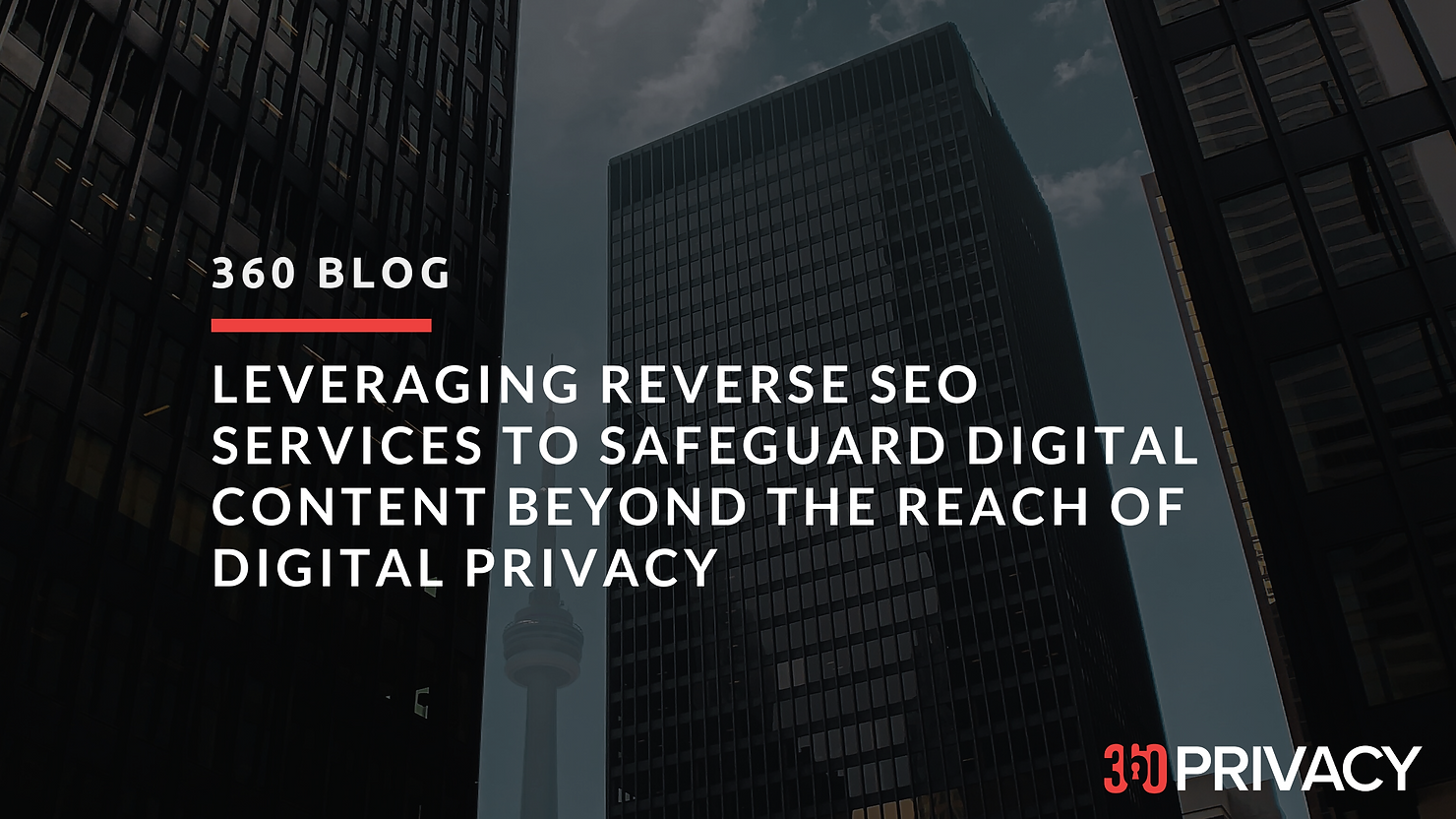Leveraging Reverse SEO Services to Safeguard Digital Content Beyond the Reach of Digital Privacy
In an era marked by the omnipresence of digital information, individuals and businesses alike grapple with the dual challenge of protecting sensitive digital content while maintaining a visible online presence.

By Trinity Davis and Tom Aldrich
In an era marked by the omnipresence of digital information, individuals and businesses alike grapple with the dual challenge of protecting sensitive digital content while maintaining a visible online presence. Digital privacy measures have made great strides in safeguarding information, but some publications and newsworthy sites are just outside the preview of a digital privacy company’s capabilities.
This article explores the concept of reverse SEO services, demonstrating how they offer a beneficial strategy to focus on digital content that a digital privacy company cannot remove from the open web. By understanding the nuances of reverse SEO and its implications for content protection and online reputation management, individuals and organizations can harness its power to ensure their digital content remains secure and under their control.
I. Digital Privacy and Its Limitations
Digital privacy has become increasingly paramount in our interconnected world. Individuals and organizations alike seek to safeguard sensitive data and personal information from malicious actors and prying eyes. Various tools and techniques, such as encryption, VPNs, and secure data storage, have emerged to protect digital assets. However, the digital landscape is dynamic, and privacy measures are not without limitations.
- Persistence of Archived Data: Once data is uploaded to the internet, it often remains archived on servers or in caches, making it susceptible to retrieval even after privacy settings have been updated or content deleted.
- Search Engine Indexing: Search engines continually crawl and index web content, making it accessible even if the original source has taken steps to restrict access or remove it.
- Data Leaks and Breaches: Despite stringent security measures, data breaches can occur, leading to the unauthorized dissemination of sensitive information.
- Unpredictable Content Sharing: Digital content shared by others can perpetuate its presence online, even if the original creator wishes to remove or restrict access.
II. Understanding Reverse SEO for Digital Privacy
Reverse SEO is a strategic approach that focuses on controlling the search engine results pages (SERPs) for specific keywords or phrases associated with an individual or organization. Unlike traditional SEO, which aims to improve a website’s ranking in search results, reverse SEO seeks to demote or bury negative content while promoting positive or neutral content. This technique is particularly valuable in managing online reputation and mitigating the impact of harmful content that digital privacy cannot remove from the open web.
- Content Suppression: Reverse SEO involves creating and optimizing web content to outrank and suppress negative or undesirable content in search results. By pushing the problematic content to lower pages of search results, it becomes less visible to users.
- Reputation Management: Individuals and businesses can proactively manage their online reputation by controlling the narrative presented in search results. Positive, accurate, and authoritative content can be strategically promoted to counterbalance negative content.
- Enhanced Visibility: Reverse SEO also focuses on enhancing the visibility of valuable digital assets, such as official websites, blog posts, and social media profiles, to ensure that they dominate the first few pages of search results.
III. Benefits of Reverse SEO for Content Protection
Reverse SEO services offer a range of benefits for individuals and organizations looking to protect digital content that digital privacy measures cannot fully remove from the open web.
- Content Control: Reverse SEO empowers content creators to regain control over their online narrative. By strategically influencing search results, they can ensure that positive and relevant content takes precedence over negative or harmful material.
- Damage Mitigation: Negative content can have far-reaching consequences for personal and professional life. Reverse SEO allows individuals and organizations to mitigate the damage by minimizing the visibility of detrimental information.
- Long-term Impact: Traditional attempts to remove content from the internet may be temporary or ineffective. Reverse SEO offers a long-term solution by managing the reputation and visibility of digital assets.
- Proactive Approach: Rather than reacting to negative content as it arises, reverse SEO enables a proactive approach to online reputation management. By preemptively creating and optimizing positive content, individuals and businesses can minimize the impact of potential issues.
IV. Practical Implementation of Reverse SEO
To harness the benefits of reverse SEO effectively, individuals and organizations can follow a structured approach:
- Content Audit: Begin by conducting a comprehensive audit of existing digital content. Identify any negative or undesirable content that needs to be addressed.
- Keyword Research: Determine the keywords or phrases associated with problematic content that need to be suppressed or mitigated.
- Content Creation and Optimization: Develop high-quality, authoritative, and positive content that targets the identified keywords. This content should be optimized for search engines to improve its ranking.
- Link Building: Build backlinks to the new content from reputable websites and platforms. This enhances the credibility and authority of the content in the eyes of search engines.
- Social Media Engagement: Actively engage on social media platforms to promote positive content and create a strong online presence.
- Monitoring and Adjustments: Continuously monitor search results and adjust the reverse SEO strategy as needed to ensure that the desired content is gaining prominence.
V. Ethical Considerations and Challenges
While reverse SEO can be a powerful tool for content protection and online reputation management, it is essential to approach it ethically and responsibly. Some key considerations and challenges include:
- Honesty and Transparency: The content created and optimized for reverse SEO should be honest, accurate, and transparent. Misleading or deceptive practices can have negative consequences for credibility and reputation.
- Legal Implications: Reverse SEO efforts should not involve illegal activities, such as hacking or spreading false information about others. Engaging in such practices can result in legal repercussions.
- Changing Algorithms: Search engine algorithms are continually evolving. Staying up to date with these changes and adjusting reverse SEO strategies accordingly can be challenging.
- Competing Interests: Competitors or malicious individuals may employ their own reverse SEO tactics, creating a constant battle for search engine dominance.
We live in an age where digital privacy measures are so very important, but we do not directly manage content on ‘reputable or newsworthy’ sites. Unfortunately, this content may negatively impact an individual or organization’s reputation. Reverse SEO services emerge as a valuable tool for safeguarding digital assets and managing online reputation. By understanding the limitations of digital privacy, individuals and organizations can take a proactive stance in controlling their online narrative.
Reverse SEO, when implemented ethically and responsibly, empowers content creators to shape search engine results, ensuring that positive and relevant content takes precedence over negative or harmful material. Through a structured approach and continuous monitoring, the benefits of reverse SEO can be harnessed to protect digital content in an increasingly interconnected and information-driven world.
360 Articles

